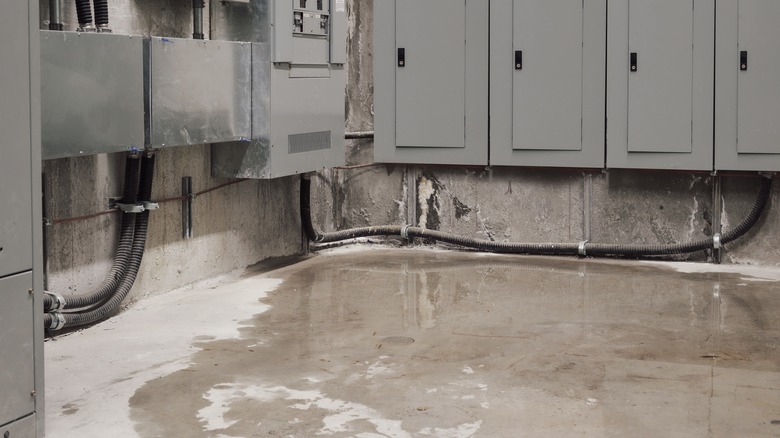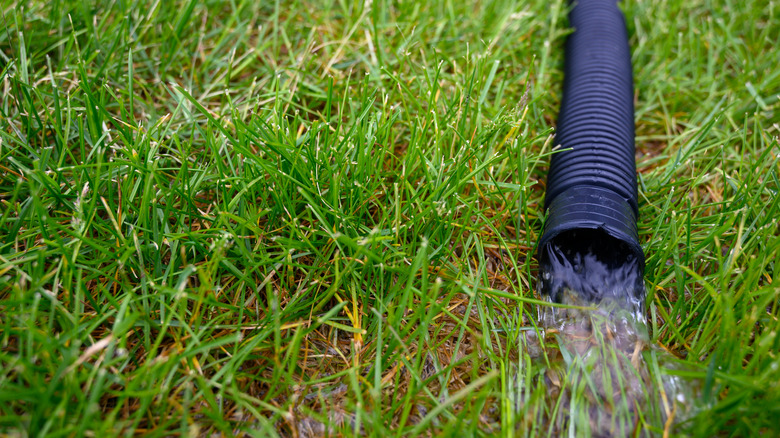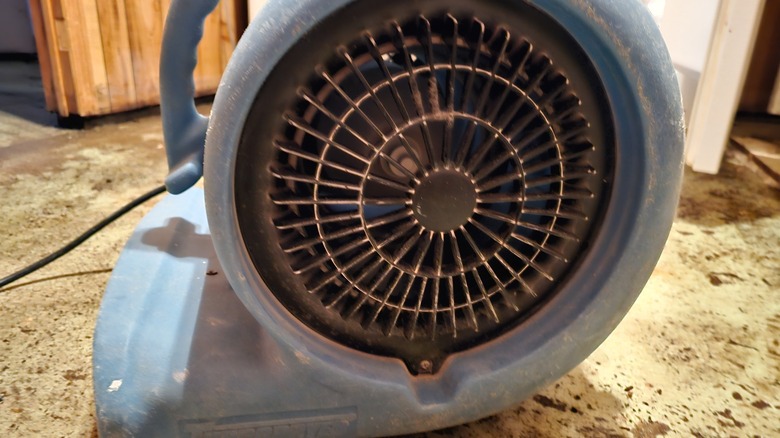The Fastest Way To Clean Up Your Basement After A Flood
Discovering a flooded basement can be nothing short of a nightmare. Not only may your belongings be underwater, but the flood water can cause a dangerous situation. It is vital to get water removed as soon as humanly possible to avoid mold growth, which can occur in just 48 hours and further damage your home. The fastest way to clean your flooded basement is to use a sump pump or a shop vac depending on the size of the flood.
While speed is important after a flood, prioritizing safety and thoroughness takes precedence. Safety should always come first, so before entering, turn off the electricity and gas. Flooding can damage electrical wires and gas lines, creating a shock or explosion hazard. Shut off utilities at the main source before heading down.
Next, you need to assess the water depth. If water reaches electrical outlets or wiring, avoid entering and call a professional. You'll also want to wear protective gear including boots and gloves to protect you from contaminated water and debris. It's important to get your basement back to normal as quickly as possible, and the biggest task ahead is going to be getting rid of all that water.
How to remove standing water quickly
Once safety has been addressed, it's time to pump the water out. If you don't have much water in your basement, the solution is relatively simple. Once you've gotten all you can out using buckets, use a shop vac for the remaining water. Shop vacs typically hold up to 5 gallons of water. First, remove the filter and then attach the appropriate nozzle for larger areas. Work in sections, starting with puddles and shallow areas. Empty your vac frequently so it doesn't become too heavy. As the canister fills, stop and safely discard water from your wet vac before continuing. After removing as much water as possible, use the crevice tool to extract water from carpets, then hang them up to dry outside, if you have space.
For larger floods, shop vacs and the old one-bucket-at-a-time technique won't cut it. Instead, if your basement floods often, you need a powerful sump pump, which is the fastest way to remove water. First, be sure to choose the right sump pump. A submersible pump is best for flooded basements, as it operates directly in the water. Look for one with appropriate horsepower based on the water depth and removal rate. A pedestal pump is better suited for shallow water, as it sits outside the water and pumps it through a hose. Set up the pump by placing it in the lowest point of the basement where the water collects. Attach a discharge hose to the pump outlet and direct it to a drain, sewer, or outdoor area away from your foundation. (This is usually done by a professional.) After water enters your basement and the sump pump removes the majority of the water, you can use a shop vac with a crevice tool to remove any remaining water, especially in corners.
Dry everything out and salvage your belongings
You'll also want to document damage and take photos and videos of the flood and cleaning process for insurance claims. Open windows and doors to maximize ventilation, and use a dehumidifier to promote air circulation and drying. Aim high-velocity fans toward wet surfaces to accelerate evaporation. Bring in a dehumidifier to extract excess moisture from the air, preventing mold growth. Immediately take out furniture, rugs, and textiles to dry outside or in a well-ventilated area. Discard the unsalvageable — which is anything moldy, contaminated, or heavily damaged.
Next, clean all the surfaces touched by water, namely walls and floors. Use soapy detergent or bleach and water to scrub surfaces with a stiff brush and rinse thoroughly. Wear gloves and protective gear. Use a mild detergent solution to clean and dry wood furniture and floors. Consider professional restoration for severe damage. Continue to monitor days and weeks after the flooding for mold growth, especially in damp areas.
If the flood is over 1 foot high, involves sewage backup, or you're unsure about handling the cleanup yourself, seek assistance from a licensed water damage restoration company. Similarly, if the flooding is severe or if you suspect structural damage to your foundation, professional help is recommended. Also, anytime you encounter electrical hazards or cannot safely access the basement yourself, call a qualified expert and don't attempt to fix it yourself.


